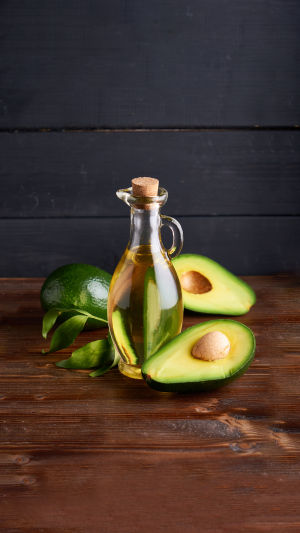Avocado is a tropical fruit, characterized by its predominantly green appearance, tender yellow flesh, oval shape, and the presence of a core in the middle. It can be consumed fresh, directly from the fruit.
Originating in Central America, avocados are believed to have first appeared in the Mexican region. As early as 5000 BC, Mexican Indians began cultivating and consuming avocados. Over time, the fruit gradually spread to other countries and regions, eventually becoming a common fruit worldwide.
Avocados possess a soft, creamy flesh with a rich, nutty flavor. The fruit contains a large seed at its center, surrounded by a layer of fluff and a yellow pulp that is edible. Avocados feature thin, smooth skin, which can vary in color from light green to dark purple, depending on the variety and ripeness.
Avocado is a highly nutritious fruit. Firstly, it is rich in healthy fats. Approximately 85 percent of the fat content in avocados consists of monounsaturated fatty acids, which are beneficial for heart health.
Additionally, avocados are abundant in vitamins and minerals, including vitamin K, vitamin E, vitamin C, vitamin B6, folic acid, potassium, magnesium, and fiber. These nutrients play a crucial role in promoting proper bodily function and overall health.
With 3.6 grams of fiber per 100 grams of fruit, avocados are considered an excellent source of dietary fiber. Dietary fiber is exclusively found in plants and includes substances that are not digested by the body. A fiber-rich diet is associated with a reduced risk of colon cancer and may aid in satiety by inducing a feeling of fullness more quickly.
In addition to their nutritional value, avocados possess several unique characteristics. Firstly, they offer a diverse range of culinary applications.
The soft and delicate flesh of avocados can be used in various dishes, such as salads, sauces, and bread, resulting in a rich and varied palate. Secondly, avocados exhibit a certain degree of shelf life even after ripening, making them convenient to enjoy without concerns of quick spoilage.
When selecting avocados, certain factors should be considered:
Skin color: Raw avocados typically exhibit a bright green color, which gradually turns black as they mature. The best-tasting avocados are typically dark green when selected.
Texture: If there is minimal difference in color, one can assess the texture by gently holding the avocado in their hands. It is recommended to avoid avocados that are excessively hard or too soft.
Overly hard avocados are often unripe and have an astringent taste, while overly soft ones may indicate over-ripeness or spoilage. A moderate level of firmness is generally preferable.
Stem color: Another method involves removing the stem from the avocado and examining the color of the connection point. A dark brown color suggests internal damage, indicating that the avocado is not fresh and should not be purchased.
Avocados are tropical fruit known for their green appearance, tender yellow flesh, and oval shape. They originated in Central America and gradually gained popularity worldwide. Avocados offer a creamy texture, rich flavor, and high nutritional value due to their healthy fats, vitamins, minerals, and fiber content.
They are versatile in culinary applications and possess a reasonable shelf life. When selecting avocados, factors such as skin color, texture, and stem color can be considered.





